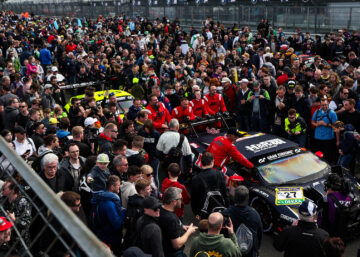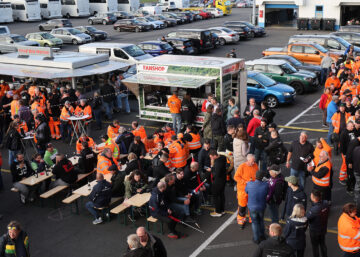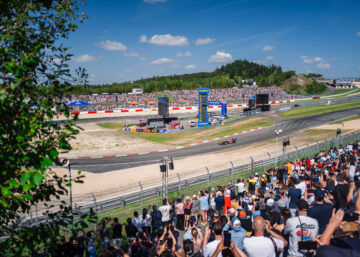All the drivers registered in the 2016 VLN endurance racing championship are ready to take up the challenge on the 2nd of April at the first of the ten qualifying races at the Nürburgring. This will be the moment for which the fans, the organisers and the drivers have been waiting for since weeks. There will be no more restrictions for the drivers in the new season. They may keep on accelerating and get up to full speed again on the straight section now as the speed limits at the Nordschleife are a thing of the past whilst the safety provisions have at the same time been further improved. “We are really happy that these restrictions have been lifted”, says Karl Mauer, VLN Chief Representative. “Both fans and participants may look forward to a spectacular VLN season. The safety standards have been improved but the unique character of the Nordschleife has nevertheless been maintained.”
No more speed limits at the Döttinger Höhe between Quiddelbacher Höhe and Flugplatz, the boards indicating the speed limit of 200 and 250 kph have been removed. The discussions in the working groups with the involvement of the DMSB (Deutscher Motor Sport Bund), the VLN organisers and the ADAC Nordrhein as well as the ILN (Interessengemeinschaft Langstrecke Nürburgring) resulted in the implementation of a range of safety measures that were adopted by the DMSB on 23rd February.
During the winter months, the Nürburgring has already applied seven measures to improve safety. The VLN season 2015 was barely over when heavy construction machinery arrived at the Nordschleife. The about 500 metres long section between Quiddelbacher Höhe and Flugplatz has been completely rebuilt between 16th November and 22nd December. Bumps in the surface were eliminated and the track was prepared with a completely flat asphalt surface in order to provide perfect conditions. New FIA fences and retention fences to increase spectator protection were installed at several points as for example at the Döttinger Höhe in order to clearly fence off the federal highway 258 which runs in parallel to the race track. An off-limits area for spectators was furthermore created in the section Schwedenkreuz.
The package of safety measures is moreover completed by modifications in the technical regulations. Those refer in particular to the high-performance vehicles of classes SP9 (GT3), SP-X and SP-Pro. These cars must have a minimum ride height of 65 millimetres in order to ensure that the spring travel will be able to absorb shock and bumps or jumps in all cases. So-called louvres (ventilation holes) on the front bumpers shall prevent a car to become airborne in a critical case. The engine performance was in addition reduced by another five percent. After the opening round of the last season, the power had already been reduced by five percent so that the maximum performance will now be ten percent lower than previously. To take the current Audi R8 LMs as an example, the performance difference in the ‘Balance of Performance’ (BoP) on the engine test bench is now 26 HP – from 511 HP at the season finale in 2015 to currently 485 HP at the opening round in 2016. “All of these seem to be minor changes but they will have a huge effect in terms of safety”, says Mauer.
After a season with many discussions and a lack of clarity, the VLN participants will thus be able to start again full speed ahead on 2nd of April at the 62nd ADAC Westfalenfahrt. Whether most sophisticated race cars or production-based touring cars, whether experienced professional drivers or ambitious private drivers – the VLN stands for a unique mixture of vehicles and driver characters racing at the most beautiful and longest race track of the world. At the end of the four hour opening round, it will become obvious who of the teams and of the drivers has used the winter break best to get the right preparation for competing in this unique series and at Germany’s most unique race track.













